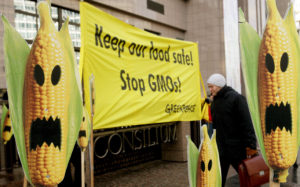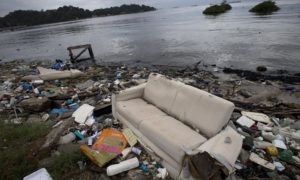Measures should be taken to control the levels of fine particulate matter (PM2.5) in the Copenhagen Metro with an increased supply of clean air and source control, according to the scientists behind the study.
The M3 line of the Metro system in Copenhagen, Denmark, has a “surprisingly” high level of fine particle (PM2.5) pollution, considering the system’s recent construction, according to the scientists behind a new study. The M3 line opened in 2019, but the issue with particulate pollution in metro systems was well known long before that.
The measured PM2.5 levels in the Metro are roughly 10 times higher than samples taken at street level in Copenhagen.
The researchers conclude that the closed-loop and fully underground design of the M3, and the usage of tunnel air for ventilation of the train carriages, are the likely culprits for the high pollution levels. They also opine that measures should be taken to control the levels of PM2.5 by using air filtration in the carriages and source control – meaning outside air for the ventilation, rather than tunnel air.
The authors suggest that the ventilation could be improved by using fans installed in draught relief shafts to actively exchange tunnel air with outdoor air, rather than relying on passive ventilation measures, such as the piston effect of the trains pushing air ahead of them. These fans are already installed, but currently only operating during emergencies. A choice that might be down to the cost of running them continuously, which can be considerable with the current energy prices.
Another improvement suggested by the authors, is fitting the trains themselves with air filtration systems, preventing the pollution from the tunnels from being passed into the carriages. This could be an “effective, and immediate measure against particulate matter in metro systems, particularly when exchanging with outdoor air is not optimal, for instance during winter.”
Study methods
The study sampled PM2.5 and CO2 levels in the entire Metro system, above and below ground. It was carried out by researchers from Denmark and Canada, and published in the peer reviewed Environment International journal.
The researchers found an average concentration of fine particles (PM2.5) of 168 μg m−3 in the M3 stations. In the M1, M2 and M4 lines, which are only partially underground, the researchers found a PM2.5 average of 109 μg m−3 in the below ground stations. The difference might be partly down to the aforementioned piston effect of the trains “pushing” fresh air through the tunnels from the outside.
The measurements were all taken outside rush hour, meaning that “it is therefore likely that commuters are exposed to even higher PM2.5 concentrations than those reported here, as several studies have found more frequent trains to cause higher levels of pollution,” the authors note.
The particulate samples have been analysed with particle-induced X-ray emission, which showed them to have an iron content of 88.6%. This is a composition that is quite different from samples taken above ground, and consistent with particle production mainly by train wheels, rails and brakes.
The researchers conclude that the sliding doors installed in stations are insufficient to keep the air clean in the carriages and stations in Copenhagen, and thus not helpful for improving air quality in the overall Metro environment. In fact, the sliding doors, while reducing the platform pollution some, increases the pollution in the train carriages, which in the study were shown to have an even higher average PM2.5 concentration of 219 μg m−3.
Effects of air pollution
Fine particulate pollution has been well documented over the years to be detrimental to human health. PM2.5 are small enough that the particles can penetrate far into the respiratory system and be deposited in the lungs, causing a variety of diseases, including cancer and cardiopulmonary disease.
In 2021, this accumulated knowledge led the World Health Organization (WHO) to update its air quality guidelines, with the new annual mean exposure threshold being set to 5 μg m−3 and a 24h average exposure should not exceed 15 μg m−3 for a maximum of three times per year.



 Photo credit: Silvia Izquierdo / AP
Photo credit: Silvia Izquierdo / AP